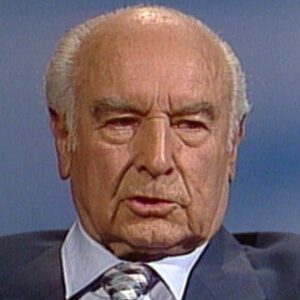Albert Hofmann was a naturalist who lived in Switzerland. This led him to study chemistry in order to find solutions to his questions. He worked at Sandoz Laboratories, where he continued his research and had a lot of success dealing with different plants and turning them into something useful. When he was the first to develop lysergic acid diethylamide, he became famous (LSD). He was also the first person to try it and learn about its psychedelic properties. He was intimately connected to nature and thought that, in addition to being effective in psychiatry, LSD might be used to improve awareness of mankind’s place in the natural world. He was upset, however, that his discovery was being abused as a recreational drug. LSD users affectionately refer to him as “The Father of LSD” because of his discovery. He wrote multiple books and over 100 scholarly articles in addition to doing his scientific investigations. He was named to The Telegraph newspaper’s list of the 100 greatest living geniuses in 2007.
Childhood and Adolescence
Albert Hofmann was born on January 11, 1906, in Baden, Switzerland. He was the youngest of four siblings. His father worked as a poor manufacturing toolmaker, and the family lived in a rented flat. He spent much of his childhood outside and developed a strong bond with nature.
He experienced mind-blowing childhood memories in which nature was altered in mysterious ways that he didn’t understand. These events prompted him to ask questions, and chemistry was the scientific subject that enabled him to answer them.
He majored in chemistry at Zurich University, with a focus on plant and animal chemistry. He received his Ph.D. with honors at the age of 23.
Albert Hofmann’s Career
He accepted a position at Sandoz Laboratories, which drew him in with their program to create pharmacological chemicals from medicinally valuable plants.
On November 16, 1938, he created LSD with the goal of creating a respiratory and circulatory stimulant. The study was put on hold for five years.
On April 16, 1943, he came across LSD again while working on the ergot fungus. He ate a trace of the substance by accident and learned about its potent effects.
He purposely consumed a dose of LSD on April 19, 1943, and rode his bicycle home as the drug’s effects engulfed him. “Bicycle day” was how LSD users remembered the day.
Hofmann developed ‘ethacetin,’ a ‘intoxicating tryptamine,’ in 1958.
At Sandoz Laboratories, he became the director of the natural products department. He kept looking into hallucinogenic compounds found in Mexican mushrooms and other plants. He created the active ingredient in many magic mushrooms,’ psilocybin.
He was also drawn to the seeds of the Mexican morning glory, where he discovered that the active ingredient ‘ergine’ (LSA, ‘lysergic acid amide’) shows a strong resemblance to LSD.
Hofmann also developed significant medications such as methergine,’ which was used to treat postpartum hemorrhaging, which was the main cause of maternal death at the time.
In 1962, he and his wife Anita Hofmann traveled to Mexico in order to locate the active component in the plant ‘Ska Maria Pastora.’ He was, however, unable to recognize it at the time. The ‘diterpenoid salvinorin A’ was later identified.
He attended the ‘World Academy of Arts and Sciences (WAAS) annual congress in Stockholm in 1963.
He worked at Sandoz Laboratories as the chief of the natural medicine research section until 1971, when he retired.
He gave a talk at Heidelberg, Germany, in 1996 at the Worlds of Consciousness Conference.
Hoffman described LSD as “medicine for the soul” in an interview before he turned 100. He was upset that it was banned internationally, given how successful it had been in psychoanalysis. He did admit, though, that it could be deadly if used incorrectly, particularly if given to a first-time user without medical supervision.
His Major Projects
He was the first to develop, use, and understand the mind-altering properties of lysergic acid diethylamide (LSD).
Achievements and Awards
In 1969, the Swiss Federal Institute of Technology awarded Albert Hofmann the title of D.Sc. (honoris causa).
The Scheele Award was given to him by the Swedish Pharmaceutical Association (Sveriges Farmacevtförbund) in 1971.
Carl Wilhelm Scheele, a Swedish Pomeranian chemist, and the pharmacist were honored with this prize in his honor.
He shared first place with Tim Berners-Lee on a list of the 100 greatest living minds published by The Telegraph newspaper in 2007.
Personal History and Legacy
Albert Hofmann married Anita and they had four children together. In 2007, his wife died, and one of his children died as well.
He died of a heart attack on April 29, 2008, at the age of 102.
Estimated Net worth
Albert is one of the wealthiest psychiatrists and one of the most well-known psychiatrists. Albert Hofmann’s net worth is estimated to be $1.5 million, according to Wikipedia, Forbes, and Business Insider.
Trivia
He was a member of the Nobel Prize Committee after his retirement.


